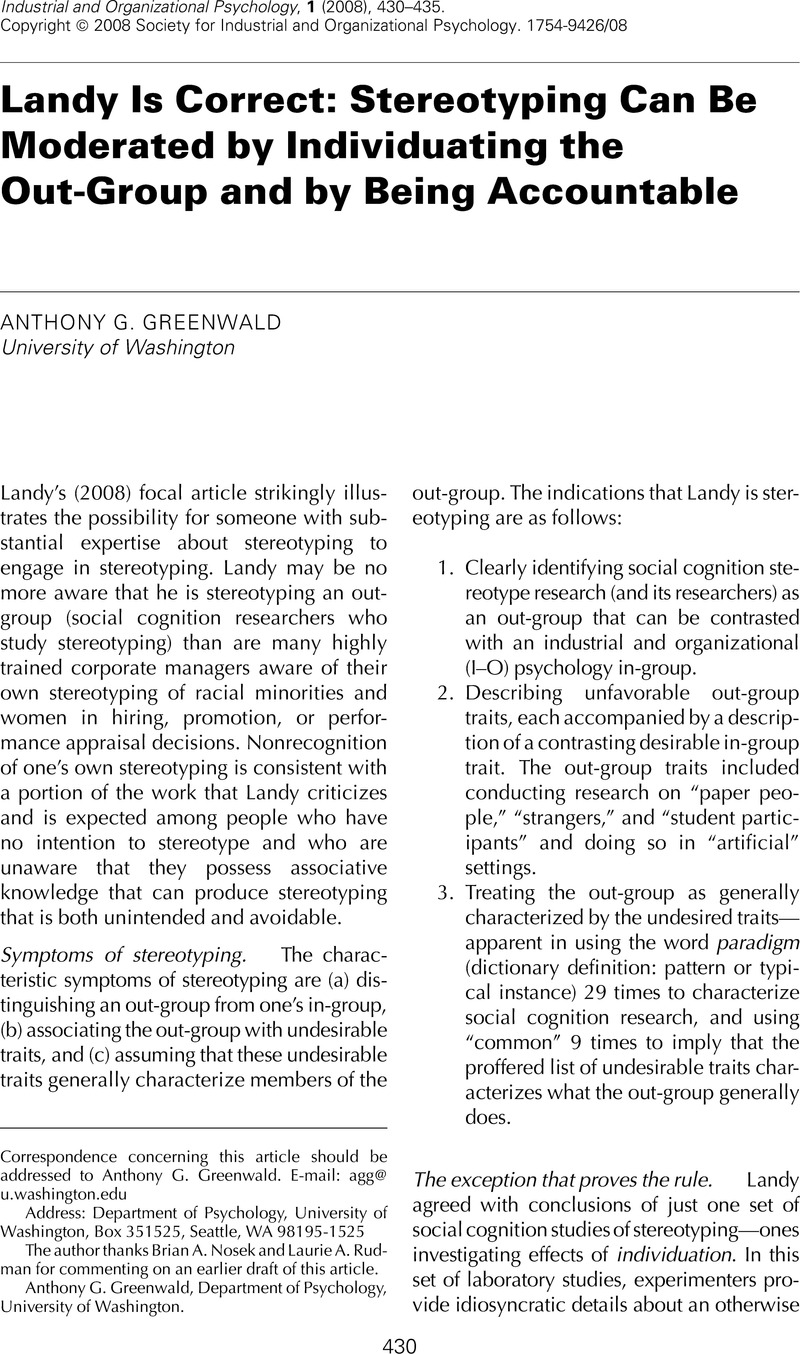Crossref Citations
This article has been cited by the following publications. This list is generated based on data provided by
Crossref.
Landy, Frank J.
2008.
Stereotyping, Implicit Association Theory, and Personnel Decisions: I Guess We Will Just Have to Agree to Disagree.
Industrial and Organizational Psychology,
Vol. 1,
Issue. 4,
p.
444.
Byrne, Zinta S.
2009.
What We Don't Know About Justice: Behaviors and Bridging the Scientist–Practitioner Gap.
Industrial and Organizational Psychology,
Vol. 2,
Issue. 2,
p.
217.
Nosek, Brian A.
and
Riskind, Rachel
2011.
Policy Implications of Implicit Social Cognition.
SSRN Electronic Journal,
Leavitt, Keith
Fong, Christina T.
and
Greenwald, Anthony G.
2011.
Asking about well‐being gets you half an answer: Intra‐individual processes of implicit and explicit job attitudes.
Journal of Organizational Behavior,
Vol. 32,
Issue. 4,
p.
672.
Fisher, Emily L.
and
Borgida, Eugene
2012.
Intergroup Disparities and Implicit Bias: A Commentary.
Journal of Social Issues,
Vol. 68,
Issue. 2,
p.
385.
Nosek, Brian A.
and
Riskind, Rachel G.
2012.
Policy Implications of Implicit Social Cognition.
Social Issues and Policy Review,
Vol. 6,
Issue. 1,
p.
113.
Murphy, Kevin R
DeNisi, Angelo S
and
Wang, Mo
2022.
Do Age Stereotypes Predict Personnel Decisions? The State of the Evidence.
Work, Aging and Retirement,
Vol. 8,
Issue. 4,
p.
323.
Drury, Lisbeth
Frasca, Keely J
Schellaert, Maaike
Derous, Eva
and
Truxillo, Donald
2022.
Age Stereotyping in Resume Screening: Don't Throw the Baby Out With the Bathwater.
Work, Aging and Retirement,
Vol. 8,
Issue. 4,
p.
331.
Hardy, Jay H.
Tey, Kian Siong
Cyrus-Lai, Wilson
Martell, Richard F.
Olstad, Andy
and
Uhlmann, Eric Luis
2022.
Bias in Context: Small Biases in Hiring Evaluations Have Big Consequences.
Journal of Management,
Vol. 48,
Issue. 3,
p.
657.





